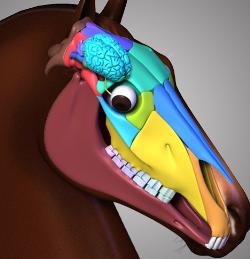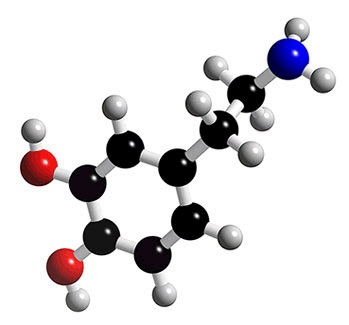Read more about dopamine here.
Brain chemicals represent themselves physically and behaviorally. These chemicals are present in horse brains, human brains, and are often referred to as neurotransmitters.
The expression of the neurochemical, dopamine, is one of the more commonly observed ones in our horse work.
Mammals (including horses and humans) share the same frame work of the more primitive areas of the brain and our neurochemicals are similar, too. Therefore, we can often extrapolate our dopamine findings across species.
For instance, a recent RadioLab segment discussed the neurology of addiction with award-winning science writer Carl Zimmer.
Zimmer: Anytime you do something that makes you feel good, your brain spurts out dopamine. For years, scientists thought of dopamine as the neurotransmitter of sex, drugs, and rock and roll. Of pleasure.
RadioLab host: But you said it had to do with movement.
Zimmer: What is the ultimate purpose of movement in terms of evolution? Movement’s purpose was to get you to food, to get you to sex, to get you to a reward. That’s why the same circuits, the same chemical that controls motivation, that controls what you want, also controls movement.
In an experiment, researchers initially noted that a monkey got the dopamine release when he took a sip of juice. But after a while, the dopamine release occurred when they entered the room. Then the dopamine release happened when researchers walked down the hall toward the room.
What the monkey’s brain is trying to do is piece together the sequence of events that lead to juice. That’s what these cells do, they try to predict rewards.
This isn’t about movement or feeling good, it’s about finding the pattern that makes  you feel good. It’s pattern finding. It’s how brains make sense of reality. It parses reality in terms of rewards. This is how you get food in the wild. How you survive might be how you can see the reward before anyone else can.
you feel good. It’s pattern finding. It’s how brains make sense of reality. It parses reality in terms of rewards. This is how you get food in the wild. How you survive might be how you can see the reward before anyone else can.
What does this have to do with horse training?
We want to optimize how our horses learn. That means recognizing the release of dopamine and being sensitive enough to predict its release. You can see the anticipation of reward (and thus a dopamine release) in a non-training situation every day:
Watch your horses’ behavior before you toss hay. Do they start licking their lips and move about when you grab the wheelbarrow or open the barn door? Does it take a while for a new horse to recognize the pattern?
Horses learn patterns that precede what will ultimately make them feel good. It’s our job to introduce patterns which will be rewarded with subtlety and benefit both horse and rider.
Happy horse work!

Great article! This gets me thinking about so many relationships between horse and human behavior. All behavior is communication and serves a purpose. We do more of a particular behavior if it gets us what we want and less of a behavior if it doesn’t produce a desired result. I will now start to look for patterns and antecedents to particular behaviors.
What a great observation, Cheryl. Thanks very much for commenting.
I saw Martin Black and Dr. Peters DVD showing this. I think if you want to do some of what Tom Dorrance could do with a horse, you need to get this science under your belt.